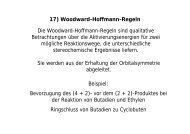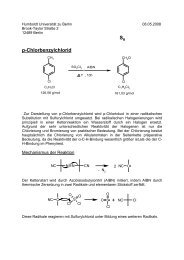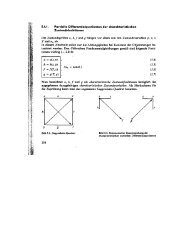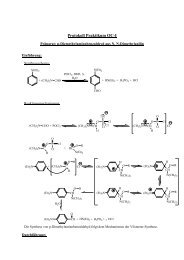Gas-Phase Reactions of Homo- and ... - Institut für Chemie
Gas-Phase Reactions of Homo- and ... - Institut für Chemie
Gas-Phase Reactions of Homo- and ... - Institut für Chemie
You also want an ePaper? Increase the reach of your titles
YUMPU automatically turns print PDFs into web optimized ePapers that Google loves.
Helvetica Chimica Acta ± Vol. 88 (2005) 1409<br />
Experimental. ± The present experiments were performed with a Spectrospin CMS 47X FT-ICR mass<br />
spectrometer [8] equipped with a Smalley-type [9] cluster ion source [10]. In brief, the beam <strong>of</strong> a pulsed<br />
Nd : YAG laser operating at 1064 nm is focused on a rotating pure metal or an alloy target to generate a<br />
hot metal plasma, from which cluster formation occurs by synchronization <strong>of</strong> a He pulse <strong>and</strong> subsequent<br />
supersonic expansion. After transfer <strong>of</strong> the thus produced ions by a set <strong>of</strong> potentials <strong>and</strong> ion lenses to the ICR<br />
cell, the cluster ions <strong>of</strong> interest are mass-selected by means <strong>of</strong> the FERETS ion-ejection protocol [11],<br />
thermalized by an Ar pulse, <strong>and</strong> then mass-selected again. The ion/molecule reactions <strong>of</strong> trapped cluster ions<br />
with the nitriles were then studied by leaking-in the neutral substrates at stationary pressures <strong>of</strong> the order <strong>of</strong><br />
10 8 mbar. Concerning the thermalization <strong>of</strong> the cluster cations, several observations reported in the present<br />
work <strong>and</strong> detailed investigations on Ni-cluster oxides [12] suggest that some electronically excited Ni ‡ 2<br />
generated in the cluster source possibly survive the thermalization. This is supported by the observation <strong>of</strong> some<br />
reactions which are clearly endothermic for ground-state Ni ‡ 2 <strong>and</strong> should, therefore, not take place at ambient<br />
temperature.<br />
The experimental second-order rate constants k are evaluated on the basis <strong>of</strong> the pseudo-first-order<br />
approximation with an absolute error <strong>of</strong> 30% [13]; in the determination <strong>of</strong> reaction-rate constants, the<br />
respective ion-gauge sensitivities [14] as well as calibration factors [13] were considered. Corresponding to<br />
capture theory [15], the reaction efficency f is given by the ratio <strong>of</strong> the bimolecular rate constants k <strong>and</strong> the gasphase<br />
kinetic collision rates k c. In some consecutive reactions, the observed time dependencies <strong>of</strong> the product<br />
distributions are analyzed by means <strong>of</strong> kinetic modeling [16]. Furthermore, some reactions were studied by<br />
double-resonance experiments [17] that allow the identification <strong>of</strong> crucial intermediates in consecutive reaction<br />
sequences by continuous ejection <strong>of</strong> the assumed intermediate ion <strong>of</strong> interest from the ICR cell <strong>and</strong> its effect on<br />
the product distribution.<br />
Results <strong>and</strong> Discussion. ± Dehydrogenation. Whereas the bare metal cations Fe ‡ ,<br />
Co ‡ , <strong>and</strong> Ni ‡ activate both C H <strong>and</strong> C C bonds <strong>of</strong> pentanenitrile, the diatomic cluster<br />
cations MM' ‡ react more specifically <strong>and</strong> insert exclusively in C H bonds in the initial<br />
step (Table 2). Only after dehydrogenation, consecutive C C bond activation is<br />
observed for CoNi ‡ <strong>and</strong> Ni ‡ 2 as discussed further below. We note in passing that a<br />
preference for C C bond activation has already been reported in different contexts for<br />
atomic cations <strong>of</strong> late transition metals in contrast to a predominant C H bond<br />
activation by the corresponding diatomic cluster cations. For example, 65% <strong>of</strong> the<br />
products formed in the reaction <strong>of</strong> Ni ‡ with butane are due to C C bond activation,<br />
whereas Ni ‡ 2 dehydrogenates butane with a branching ratio <strong>of</strong> 80% [18]. Furthermore,<br />
the reactions <strong>of</strong> FeCo ‡ with alkenes are restricted to C H bond activation, whereas<br />
atomic Fe ‡ <strong>and</strong> Co ‡ activate C H as well as C C bonds <strong>of</strong> alkenes [19].<br />
In line with the concept <strong>of</strong> remote functionalization, the labeling distribution <strong>of</strong> the<br />
dehydrogenation products reveal that, for all cluster cations examined, dehydrogenation<br />
involving the terminal positions (g <strong>and</strong> d) is preferred (Table 3). This result is<br />
supported by preliminary DFT studies performed on the cluster-cation complexes with<br />
ethanenitrile, according to which only the linear end-on C 3u-symmetric complexes,<br />
CH 3CN MM' ‡ , correspond to minima [20]; linear end-on structures are also preferred<br />
for the mononuclear cations [7a,b]. However, some distinct features <strong>of</strong> the isotopic<br />
distribution in the reaction products are notable. For example, the unexpectedly high<br />
amount <strong>of</strong> H 2 loss from 11b <strong>and</strong> the considerable fraction <strong>of</strong> D 2 elimination from 11a for<br />
the nitrile complexes <strong>of</strong> Fe ‡ 2 <strong>and</strong> FeCo ‡ cannot be reconciled in terms <strong>of</strong> remote<br />
functionalization by a formal 1,2-H 2 elimination. Thus, for these clusters an additional<br />
process needs to be invoked in the dehydrogenation, <strong>and</strong> a formal 1,1-elimination <strong>of</strong> H 2<br />
involving the terminal C H bonds is suggested to be operative (see below).<br />
Furthermore, H/D scrambling processes to different extents are observed for all the<br />
cluster cations examined. To quantitatively analyze these results, detailed kinetic


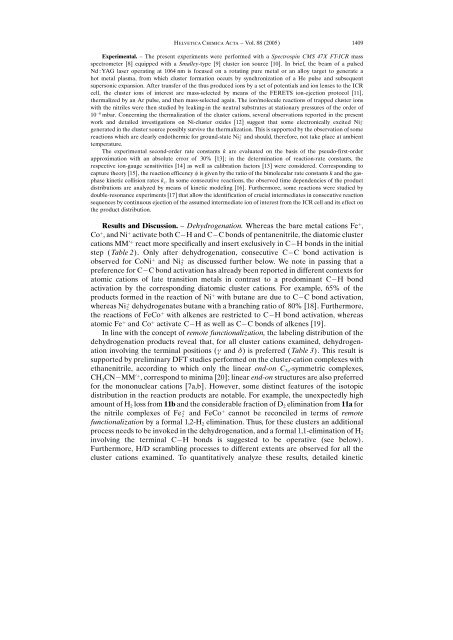
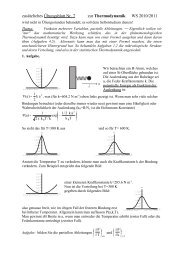
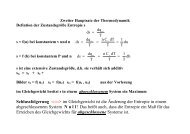
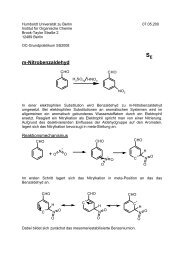
![Photoswitchable ionophores based on 1,3-alternate calix[4]arenes ...](https://img.yumpu.com/12290271/1/190x253/photoswitchable-ionophores-based-on-13-alternate-calix4arenes-.jpg?quality=85)
